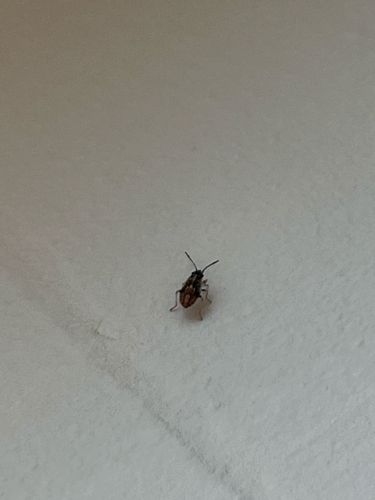Minute Pirate Bug
Scientific Name: Orius insidiosus (a common species, though other species exist)
Order & Family: Order: Hemiptera, Family: Anthocoridae
Size: Typically 2-5 mm (0.08-0.2 inches) in length

Natural Habitat
Found in a wide variety of agricultural crops, gardens, and natural ecosystems. They are commonly seen on plants, particularly those infested with their prey. They overwinter as adults in plant debris or sheltered locations.
Diet & Feeding
Mainly feeds on small soft-bodied insects and mites, including spider mites, thrips, aphids, insect eggs, and small caterpillars. They are generalist predators. In the absence of insect prey, they may also feed on plant saps or pollen, but they are primarily carnivorous.
Behavior Patterns
Minute pirate bugs are active predators. They have a short life cycle, with several generations per year. Adults and nymphs actively search for prey. They can fly but are also observed walking on plants. While beneficial in gardens, they are known to bite humans, especially when perceived as trapped or simply exploring, which can cause a sharp, stinging sensation.
Risks & Benefits
Benefits: Minute pirate bugs are highly beneficial as natural enemies of many agricultural and garden pests, contributing to biological pest control and reducing the need for chemical pesticides. Risks: They are known to bite humans, which, although not medically significant, can be painful and irritating. These bites are typically a defensive reaction or an exploratory bite, as humans are not their natural prey.
Identified on: 8/30/2025